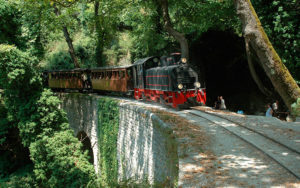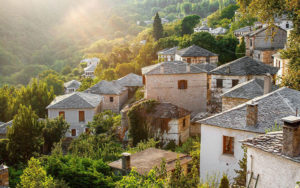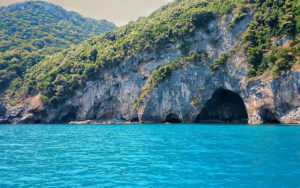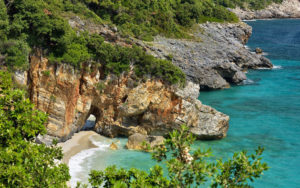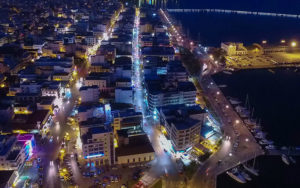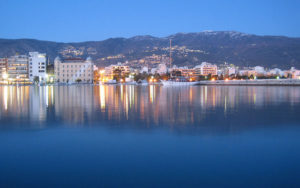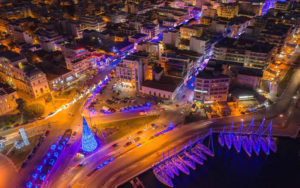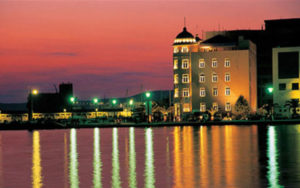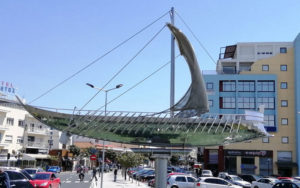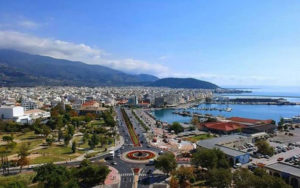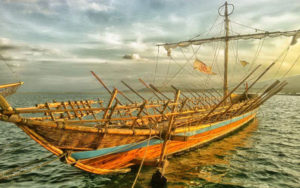The city of Volos, situated at the foot of Mount Pelion and near the site of ancient Iolcos, dominates the region ofMagnesia overlooking the Pagasetic Gulf. It is one of the largest cities in Greece and one of the most important ports in the country, and is situated in one of the most interesting areas of Thessaly, which combines the allure of the sea with the mystical charm of the Centaurs’ Mountain, where creatures part-horse, part-human were born according to Greek mythology.
The area of Volos has some 40 Neolithic sites dating back to the 7th and 8th millennia BC, including Sesklo and Dimini, where engraved pottery, tools made of bone and stone, utensils and items in obsidian are on display. Mycenaean sites have been found, instead, in Iolcos on the hill of Agioi Theodoroi, in the area of Palia in the district of Volos, and in Pefkakia. The rich history of the city has left its mark on the city’s architecture, including palaces, municipal buildings, museum, early twentieth-century industrial facilities and churches.
The areas surrounding Iasonos, Dimitriados and Ermou make up the centre where the city buzzes day and night, partly due to the students of the University of Thessaly. Don’t miss a visit to the Castle of Volos, in the district of Palia, a former galley building centre.
Another enchanting corner of the city is the Park of Agios Konstantinos, right on the beach, which provides a breath of fresh air to residents and tourists.
Interests in Volos
Churches
Also Worth a visit are the Church of Agioi Konstantinos and Eleni, which dominates the seafront and was designed and built by the architect A. Zachos in 1936, and the Agia Triada, a small gem in Byzantine style built in 1948. To the east of Volos, Goritsa Hill has a splendid view of the surrounding area. The Church of Zoodochos Pigis sits on its peak, while Panagia Tripa di Goritsa, a small church dedicated to the Virgin Mary built inside a natural cave, lies at its foot.
Museums
Don’t miss the opportunity to get to know Volos by visiting the splendid collections in its museums. The Kitsos Makris Museum of Folklore, housed in the home of the researcher Kitsos Makris, includes works of folk art and a library of over 4,000 rare books. The N. & S. Tsalapatas Rooftile and Brickworks Museum, housed in an old factory, instead offers the opportunity to learn more about the industrial past of the city. The Athanasios Koutroumpas Entomology Museum displays the largest moth in the world with a wingspan of 37-40 centimetres. The Theofilos Museum delights for its paintings of Teofilo Chatzimichail. Don’t miss the Athanasakio Archaeology Museum housed in a neoclassical building, which displays finds from Thessaly from prehistory to Roman times.
The sea front and the beaches
The city has a sea front animated by restaurants. The sea front road that leads to the port is perfect for a romantic stroll with splendid views over the open sea. Without doubt, this is most impressive corner of the city, enhanced by fishing boats, yachts and a reproduction of the old ship Argo. The beaches of Volos are among the best known of Greece, such as those of Agios Dimitrios, Anchialos, Alykesand Pigadia, all with heavenly scenery.
The Sporades Islands
A connection with the Sporades Islands offers tourists the opportunity of making a trip to Alonissos, Skopelos or Skiathos to see the National Marine Park of the Sporades, a refuge for rare birds and monk seals. Secluded beaches and marine caves, such as the submerged city of Alonissos or the Cave of Poseidon can be reached by small boat. The islands of the Pagasetic Gulf, instead, are fishing areas for underwater fishermen and, at the mouth of the Anavros River and on nearby beaches, water skiing and windsurfing can be practised.
Pelion
From Pelion, you can reach the beaches overlooking the Pagasetic Gulf or the Aegean Sea, with crystal-clear water and luxuriant vegetation. Mylopotamos is a beach where the water is warm even in autumn, and the huge rocks there, sculpted by the sea and wind, are a monument to nature. A short distance away are the beaches of Damouchari, with white and pink pebbles, and Chorefto, one of the longest in Greece. People who love secluded beaches can choose those of Parisaina, Analipsi and Agioi Saranta near Chorefto. The Village of Ai-Giannis, a short distance from Damouchari, is worth a visit for its picturesque taverns with sea views which offer fish dishes.
The region around Volos is spectacular. A few kilometres to the west is Pelion, a place with a stunning view of the sea and gems of architecture. Its villages are also unique, such as Portaria, Tsangarada, Zagora, Vyzitsa andMilies, which are equipped for ecotourism, horse-riding, trekking and skiing.
The Pelion Railway
Finally, the Pelion Railway, inaugurated in 1903 and reopened in 1996, is a unique feature of the area. The route begins in Lechonia, climbs through panoramic villages and ends in Milies. The station and its trains were one of the favourite subjects in the metaphysical paintings of Giorgio de Chirico, who was born and grew up in Volos. The De Chirico family was one of the most important in Volos and it was his father, the engineer Evaristo de Chirico, who supervised the construction of the Thessaly Railway, which has been in existence since 1882. The station houses the Thessally Railway Museum displaying documents and personal objects belonging to Evaristo de Chirico.
The very tasty local products of Pelion can be purchased in the market of Volos, such as dairy products with spicy flavours, brightly coloured puddings, homemade pasta, liqueurs made of mountain fruits and local herbs.

